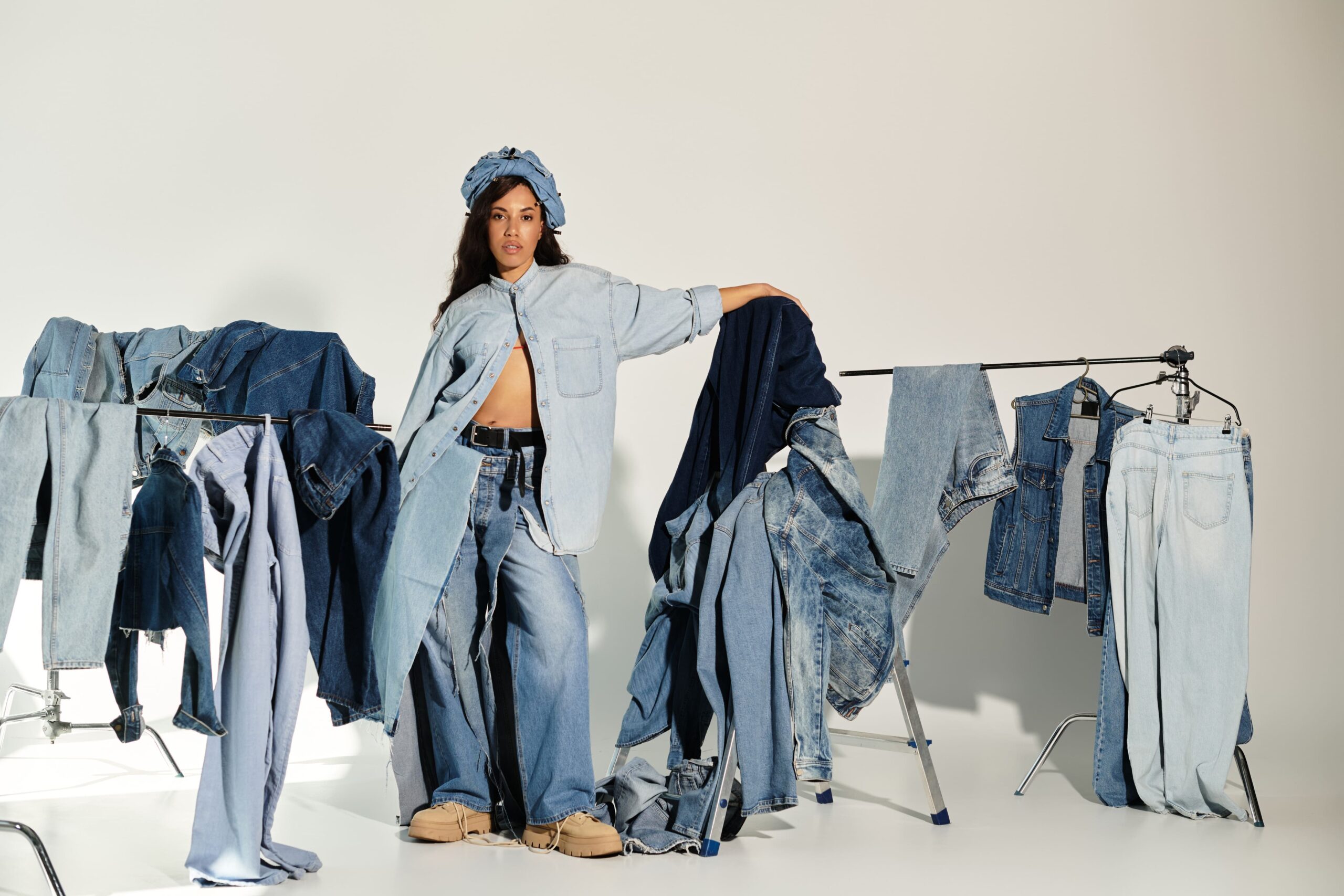June 2025
Textile Waste in Fashion: The Problem E-Commerce Can’t Ignore
Ester Bazzanella

It shouldn’t be news to anyone by now that the fashion industry generates massive amounts of waste.
Globally, the fashion industry produces 92 million tonnes of textile waste each year.
If you’re having a hard time imagining what that looks like, consider this: every second, a truckload of clothing is either sent to a landfill or burned.
Clearly, something needs to be done about this. And fast. If things continue this way, annual textile waste is projected to reach 134 million tonnes by 2030. Far from sustainable.
What can you do about it?
If you manage an e-commerce store, you may think you can’t do much to solve fashion’s textile waste problem. But that’s just not true. From reducing returns to better managing stock, there’s a lot you can do to reduce your store’s role in contributing to textile waste.
In this article, we’ll cover the growing concern of textile waste in the fashion industry, how both fast fashion and luxury brands contribute to the problem, the role fashion e-commerce plays, and what you can do about it.
The Scale of Global Fashion Textile Waste
Here are some numbers to help you truly understand the scale of the fashion industry’s textile waste problem:
- Fashion production makes up 10% of global global carbon emissions;
- Every year, 85% of textiles are either incinerated or end up in landfills instead of being recycled.
- 100 billion garments are produced every year, with the majority ending up in landfills.
- People tend to only wear garments 7 to 10 times before throwing them out. This translates to between 54.7 and 95.7 pounds, or 25 to 43 kilos, of textile waste per person per year.
Did you know? To help illustrate the growing problem of textile waste, Re-Commerce Atacama has begun shipping brand-new, unused clothing found in Chile’s Atacama desert to draw attention to the situation.
Fast Fashion Vs Luxury Fashion: Waste Contributions
Fast fashion and luxury might live on opposite ends of the price spectrum, but both contribute to textile waste in different ways.
Fast fashion is all about speed and volume. Think of thousands of new styles dropping each week, made fast, and usually made with synthetic fabrics. These garments are made cheaply to keep costs low, almost guaranteeing their inevitable fate of ending up in landfills.
Luxury fashion, on the other hand, produces fewer items with higher-quality materials. However, to protect the brand image, some labels have destroyed unsold inventory instead of discounting it. For example, in 2018, Burberry admitted to burning $37 million worth of goods instead of discounting them.
However, since luxury represents a much smaller share of the overall fashion market, it contributes much less overall. On top of that, luxury garments are generally higher quality and retained longer by consumers, often resold or handed down rather than immediately discarded.
In short, fast fashion drives massive amounts of waste, whereas luxury fashion’s waste issues have revolved around unsold stock disposal and long-term accumulation of high-end goods.
The Role of Fashion E-commerce: Returns, Overproduction, and Unsold Stock
It’s never been easier to shop online. Or more popular. That’s good for you and your customers but that convenience does come with a downside: a growing mountain of textile waste tied directly to how fashion e-commerce works today.
High Return Rates = High Waste
When it comes to online shopping, returns are a big deal. Around 20–30% of online fashion purchases are returned, compared to just 9% for in-store buys.
Why?
A lot of it comes down to sizing. Many shoppers order multiple sizes to try on at home (aka “bracketing”), then return what doesn’t fit. Others purchase garments to wear just a few times before returning them, a form of fraud known as wardrobing.
The problem is, not all returns make it back into inventory. Some are damaged in transit, while others cost more to process than they’re worth. In the U.S. alone, over 5 billion pounds of returned goods end up in landfills each year.
Overstock Happens A Lot
E-commerce thrives on endless choice. But to keep up with demand (and microtrends), many brands overproduce. That means warehouses full of unsold inventory a lot of which never sees the light of day.
For many fast fashion retailers, it’s cheaper to toss excess stock than store or resell it, especially when trends move so fast.
Returns Are Wasteful And Emissions Heavy
Returns create landfill waste, but they also come with a carbon footprint. Think of all the trucks, planes, and packaging involved in sending a shirt out, then bringing it back. In fact, reverse logistics from online returns account for an estimated 24 million metric tons of CO₂ emissions annually.
So even when returned items aren’t trashed, they still cost the planet.
What You Can Do to Reduce Textile Waste
So, what’s the solution? What can you do while managing an online clothing store to contribute to reducing textile waste generated by the fashion industry?
Let’s take a look!
Start by Reducing Returns
Let’s start with one of the biggest (and easiest to fix) culprits of textile waste in fashion e-commerce: returns.
As we’ve seen, clothing returns from online sales are much higher than for physical purchases. The reason is that consumers have a hard time picking out the right size based on images and size charts alone.
To address this, implementing a virtual fitting room or size recommendation tool is a game-changer. Size recommendation tools, like Size & Fit, help shoppers find their ideal size before they click “buy”. Stores that use Size & Fit cut returns by up to 40% – that’s huge!
Beyond textile waste, reducing returns also shrinks your carbon footprint by reducing return shipping.
Related: Sustainability for Online Apparel Stores [E-book]
Get Strategic About Inventory and Demand
E-commerce lets you offer more SKUs than ever, but that “endless aisle” approach comes with a risk: overproduction.
Overproducing to stay ahead of trends often leads to unsold stock, which can quietly become waste. If thousands of retailers are all overproducing, it’s easy to see how unsold clothing ends up in landfills or incinerators instead of closets.
Instead of chasing volume, smart e-commerce stores are shifting toward:
- Smaller, data-driven production runs;
- On-demand manufacturing or pre-orders;
- AI-powered trend forecasting.
These models help you avoid waste before it starts. By aligning production with demand, not just trends, you reduce the risk of excess inventory gathering dust (or worse, being discarded).
Rethink What Happens to Unsold Stock
You’re not alone if you’ve got slow sellers or leftover stock from past seasons. But tossing them shouldn’t be the default. There are more sustainable and profitable options out there:
- Discount and outlet channels can help you clear inventory without a landfill impact.
- Donation programs give unsold clothing a second life to people who need it.
- Upcycling partnerships can turn deadstock into new products like tote bags, accessories, or capsule collections.
Implement a Buy-Back Program
Beyond brands, many consumers are also looking for ways to reduce their environmental footprint. Many shoppers are turning to thrifting and buying secondhand clothing to keep garments from ending up in landfills. In fact, by 2028 the secondhand apparel market is estimated to reach $350 billion!
Many brands have clued in and begun offering trade-in or buy-back programs. Brands like Patagonia and Lululemon both do this well. By allowing their customers to trade in lightly-worn garments for store credit, they give new life to old garments. Not only that, but they also foster loyalty and solidify their commitment to sustainability. It’s a win-win-win situation for the brand, consumers, and the planet.
Communicate Your Commitment to Sustainability
Today’s shoppers want to buy from brands that align with their values. 73% of Gen Z consumers say they will pay more for sustainable products.
That means being open about your sustainability efforts is just plain smart fashion e-commerce marketing.
Highlight your waste-reduction strategies on your:
- Product pages (e.g., “made-to-order to prevent waste”) and in product descriptions;
- Shipping materials (e.g., “your fit was matched with Sizebay to avoid returns”);
- Email marketing and social content;
- About our Sustainability pages.
The more transparent and action-oriented you are, the more trust (and loyalty) you’ll build.
Talking About Textile Waste Is the First Step
The issue of textile waste in fashion is one of the industry’s biggest challenges, but also one of its most significant opportunities. By working to reduce returns, managing stock more efficiently, and rethinking the supply chain, fashion e-commerce can begin reducing its environmental footprint.
If you’re looking for other ways to manage your e-commerce store more effectively, check out our blog, which includes 9 essential key performance indicators you should track.







